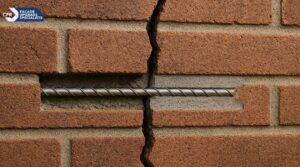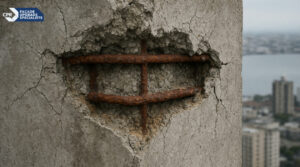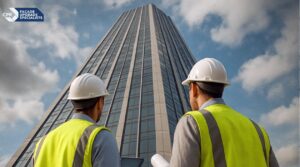Rope Access vs Scaffolding for Difficult Access Facade Repairs in Newcastle: Which is Better? Choosing the right method for facade repairs in Newcastle’s high-rises can mean the difference between an efficient, cost-effective project and one plagued by delays and disruption. Building owners, strata committees, and facility managers should carefully weigh the pros and cons of rope access and scaffolding.
Understanding the Two Main Methods
Rope Access Newcastle
Rope access uses ropes, harnesses, and anchor systems to position trained technicians exactly where they’re needed. In Newcastle, it’s increasingly popular for high-rise maintenance thanks to its speed and adaptability.
Why it works well:
- Anchors suspend technicians directly on the facade.
- Perfect for targeted repairs, inspections, and smaller projects.
- Always performed by IRATA-certified professionals.
Scaffolding Newcastle Facade Repair
Scaffolding is the traditional approach: building a temporary structure around the facade. While stable, it’s often more intrusive.
Why it’s still used:
- Continuous platforms for large crews.
- Suitable for projects involving heavy materials.
- Requires more space and longer setup times.
Time Efficiency
- Rope Access: Systems like CPR’s MARS™ and SkyPod® can be installed in hours, allowing work to start almost immediately.
- Scaffolding: Setup can take days or weeks, delaying the actual repairs.
Cost-Effectiveness
- Rope Access: Lower setup costs mean more budget can go into high-quality materials or additional repairs.
- Scaffolding: Higher upfront costs for hire, transport, and labour.
Minimising Disruption
- Rope Access: CPR’s Scaffold-Free™ methods are quiet and unobtrusive, letting occupants carry on with daily life.
- Scaffolding: Can block windows, footpaths, and building access.
Safety Considerations
- Rope Access: IRATA-certified teams plus CPR’s SkyPod® system enhance safety and stop debris from falling.
- Scaffolding: Stable platforms but risks arise during erection, dismantling, or from poor maintenance.
Flexibility in Difficult Spaces
- Rope Access: Ideal for tight or irregular spaces, including heritage facades.
- Scaffolding: Often impractical in restricted or delicate locations.
Environmental Impact
- Rope Access: Minimal materials and transport reduce the carbon footprint.
- Scaffolding: Heavier reliance on steel and timber increases environmental costs.
Emergency Repairs
- Rope Access: Best for urgent jobs due to fast mobilisation.
- Scaffolding: Slower setup makes it less suitable for emergencies.
CPR’s Advanced Solutions in Newcastle
CPR Facade Upgrade Specialists use proprietary systems like MARS™ and SkyPod® to handle the city’s most challenging projects efficiently and safely. These methods:
- Reduce disruption.
- Speed up work.
- Increase safety.
- Allow precise repairs.
Find out more:
Choosing the Right Method
Consider:
- Job size and materials.
- Timeline.
- Budget.
- Space and heritage restrictions.
- Disruption tolerance.
The Bottom Line
For most difficult access facade repair Newcastle projects, rope access is faster, safer, and more cost-effective—especially with experienced IRATA-certified teams using CPR’s MARS™ and SkyPod® systems. Scaffolding still has a place for certain large-scale jobs, but its drawbacks often outweigh its benefits.






